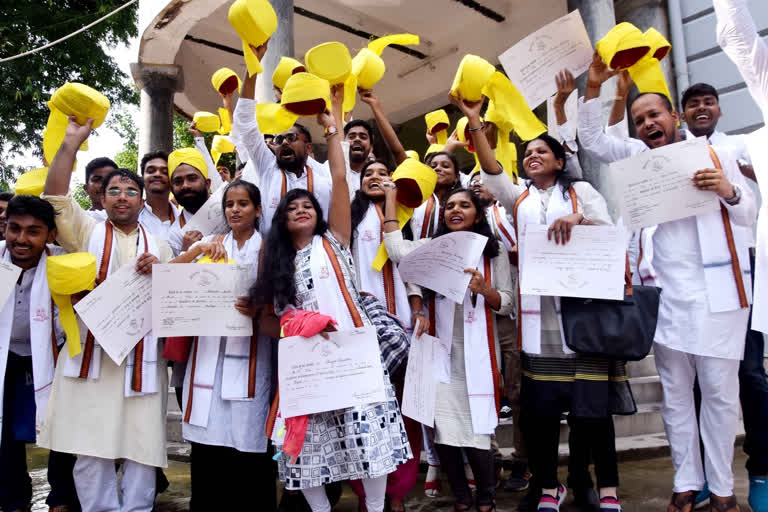New Delhi: India is the birthplace of world-renowned universities like Nalanda and Takshashila. But now it has become a thing of the past. Gradually, the standards of Indian universities are lowering.
The QS World University published its annual worldwide university rankings for the year 2020 where only IIT Mumbai, IISc Bangalore and IIT Delhi from India made it to the Top 200.
This shows the quality of studies in the institutes of higher learning in our country.
Before attracting students from other countries, it’s important to shape our colleges according to local needs and improvise their standards. The responsibility to implement international standards in our universities lies with the government.
In lieu of conventional courses, professional courses which have more employability must be introduced. That way, universities become centres for human-resource creation instead of being centres for unemployability.
Worldwide, India stands 7th in terms of GDP. We are leading exporters of software services. Hyderabad and Bangalore are well known for start-ups. Sundar Pichai and Satya Nadella of Indian-origin have scaled great heights in their respective fields. They are an inspiration to many.
A lot of students from Indian universities are being employed in Fortune 500 companies. They are better at speaking English compared to students from other countries.
Multiculturalism is one of the strongest points of India.
There are an estimated 70,000 foreign students enrolled understudy in Indian programme.
The aim is to increase this number to 2,00,000 by the year 2022.
READ: INX Media case: Chidambaram denies CBI claim of using FM office for personal gain
Some universities have introduced scholarships and reduced fees to attract more foreign students. From 2015, subject experts from several foreign universities are being invited. Through Scheme for Promotion of Academic and Research Collaboration (SPARC), collaborations with 500 world class universities are on the cards. It’s a laudable move to give financial funding to top 100 universities in the world.
Other universities will be linked with these in order to provide better education for everyone through online courses.
With world-class education and facilities, countries like the USA are attracting intellectuals from all corners of the world.
There is a lack of faculty and facilities in universities and affiliated colleges. Professor and teaching assistant vacancies have been left unfilled for a long time.
There is lack of commitment in governing bodies leading to a leniency in evaluating performance of teaching staff. All these hinder the development of higher education.
Due to the lack of professional skills, engineering graduates are taking up odd jobs. There is no relation between what the students are taught in colleges to what the industry expects out of candidates.
In these dire circumstances, conventional courses and outdated curriculum must be scrapped and employability skills must be taught by making industry experts a part of the education system. Affiliated colleges must be religiously monitored.
The Centre has recently launched the online portal SWAYAM (Study Webs of Active Learning for Young Aspiring Minds) so that people can study through MOOC (Massive Open Online Courses). It is a welcome move to invest in higher education and provide the necessary facilities.
Our universities must be reformed completely before trying to increase the intake of foreign students.
That way, brain-drain can be prevented, and we can stand parallel to world intelligentsia.
Advertising through social media and collaborating with the best universities will also bring the desired results. Only then can higher education be revived and go back to its former splendour in India.



